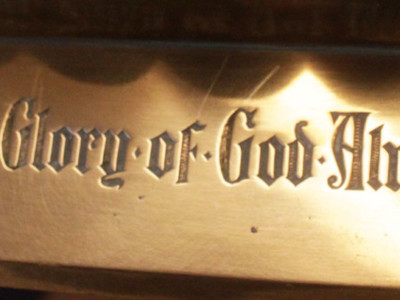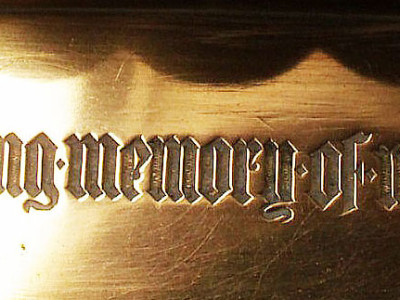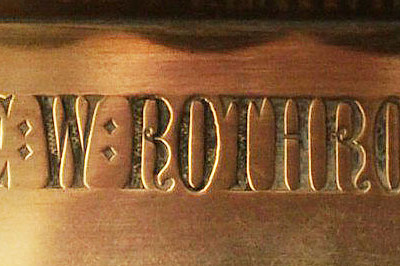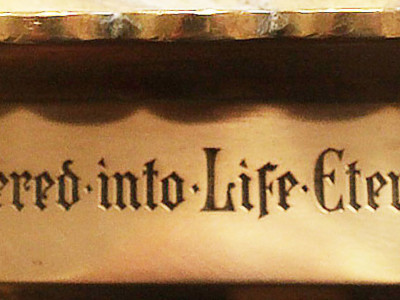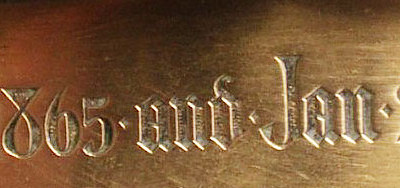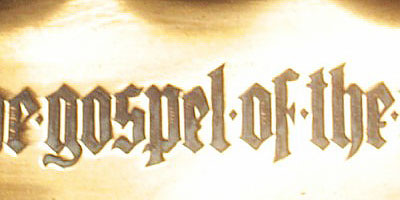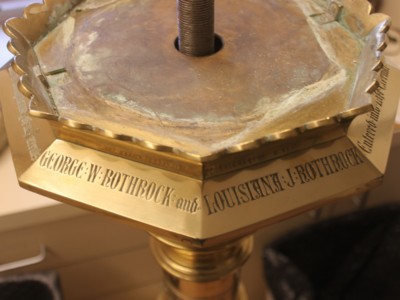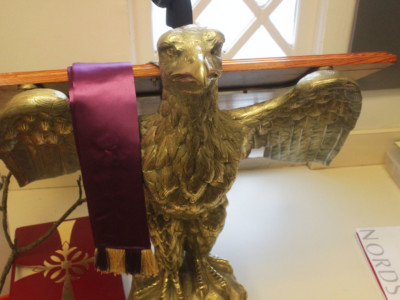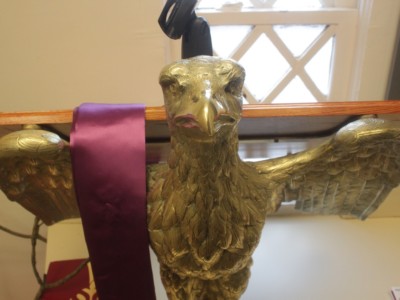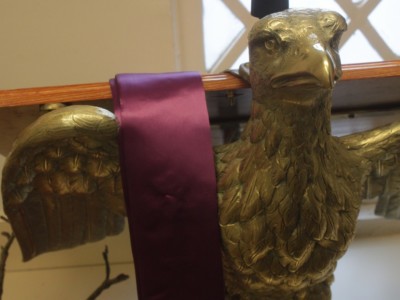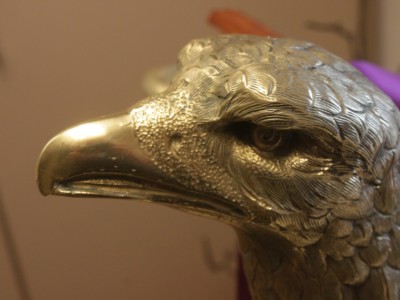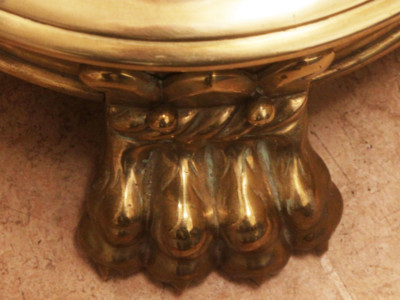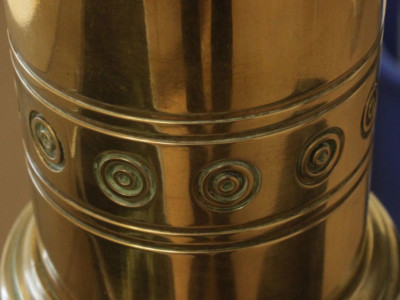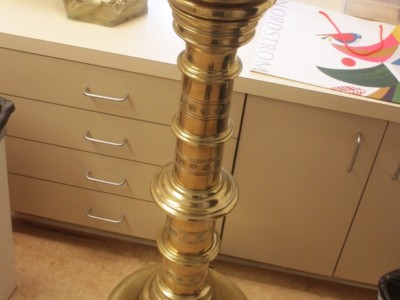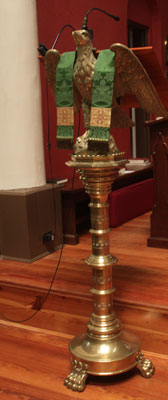
“In 1895 Mrs. Annie T. Harrison of Philadelphia, a generous friend of St. George’s on numerous occasions, presented the congregation with ‘a very beautiful and costly antique brass’ lectern. (Quenzel, Page 57). It honored George Rothrock (1798-1865) and his wife Louisiana Rothrock who is buried in our graveyard and was in the hardware business and fabricated various items – Blacksmith tiles. Brass candlesticks and general assortment of copper and tin wire. He also served on the Vestry beginning in 1824.
“To the Glory of God Almighty and in Loving Memory of my Parents George W Rothrock and Louisiana J. Rothrock Entered Into Life Eternal Dec. 9th 1865 and Jan. 25th 1888 To Testify The Gospel Of The Grace of God”
The symbolism of the eagle derived from the belief that the bird was capable of staring into the sun and that Christians similarly were able to gaze unflinchingly at the revelation of the divine word. [Taylor, Richard (2003). How to Read a Church: A Guide to Images, Symbols and Meaning and Cathedrals.]
Alternatively, the eagle was believed to be the bird that flew highest in the sky and was therefore closest to heaven, and symbolizeed the carrying of the word of God to the four corners of the world. Delderfield, Eric R. (1966). A Guide to Church Furniture. Newton Abbot: David & Charles.
The eagle is the symbol used to depict John the Apostle, whose writing is said to most clearly witness the light and divinity of Christ. In art, John, as the presumed author of the Gospel, is often depicted with an eagle, which symbolizes the height to which he rose in the first chapter of his gospel. The eagle came to represent the inspiration of the gospels. The tradition of using eagle-shaped lecterns predates the Reformation. Ferguson, George (1966). Signs and Symbols in Christian Art. New York: Oxford University Press
Photos


